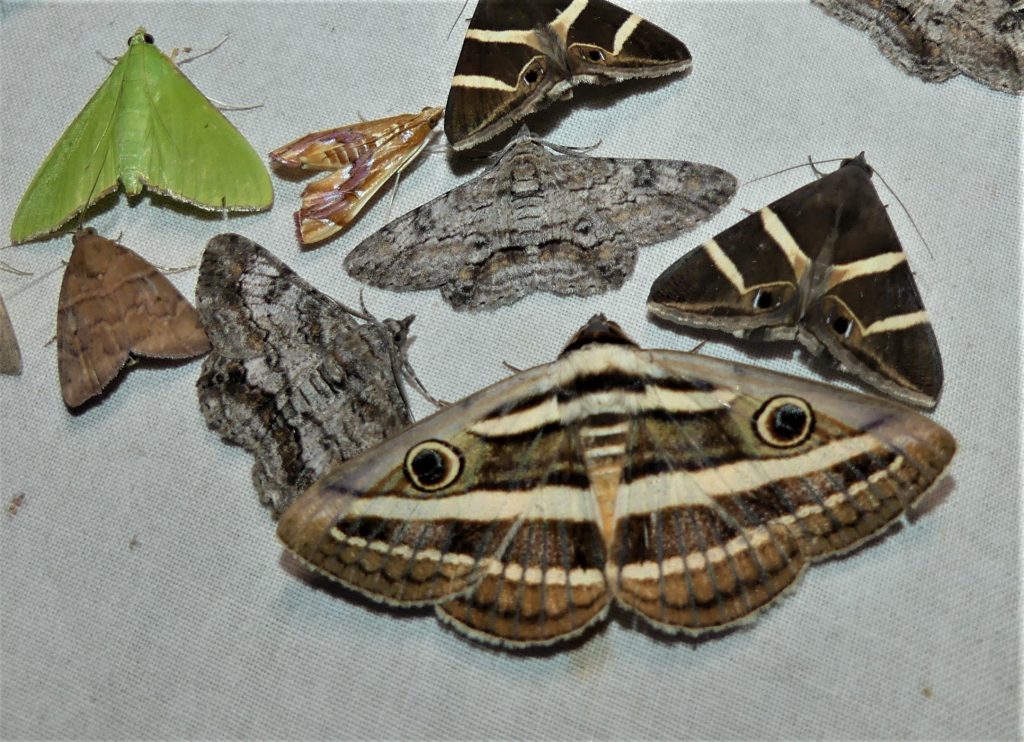
This website is in the early stages of development.
For the moths we have seen here go to the Family page.
INTRODUCTION:
Our objective in establishing and maintaining this Moth website is to record in photographs moths that we sight here on our rural property, Claire Cottage, on the Dorrigo Plateau, NSW. In addition to securing photographs of the live moths attracted to our moth-light, we plan to document any information of interest, about each specific species, that we observe here on our property.
As conservationists we have no interest in killing moths or building pinned collections. Such pinned collections have been necessary to assist scientific study in the past and continue to be important for Museums and scientific organisations today but rarely is this process needed for citizen scientists. Digital photography allows citizen scientists with a general interest in lepidoptera to observe any specific external body markings or body shapes etc., that may assist visual identification. Our personal goal is to do all we can to assist species from not becoming extinct.
It must be understood that many specimens conserved in pinned collections deteriorate over time, often losing their natural colours. For preservation pinned lepidoptera specimens need to be protected from attack by tiny insects feeding on their abdomen &/or wings. It is also important that they be stored in cool conditions. These problems are avoided if using Digital photography to record your sightings with the bonus of allowing the moth to continue its life cycle thus not reducing possible offspring numbers.
As conservationists, after photographing the moths attracted to our light, but before dawn whilst it is still dark, we switch off our moth light to encouraged our visiting moths to take flight again. Using a light, together with a moth sheet, it is important to give the moths time to fly away before sun rise, otherwise birds will quickly discover them and devour them after dawn. This risk is removed if you are using a moth trap providing live moths are released after dark.
We keep in mind humans have played a major role in assisting extinction of many species of animal life over time, often following the belief that it was safe to kill individual specimen’s of a species because they were seen to be secure in overall numbers. In our pre-adult years our interest in lepidoptera began as collectors until we could afford to buy a camera. Then we realised photographs was all we needed. We now feel hurt in witnessing the unnecessary death of any lepidoptera species. Today in our adult years we keep in mind that the local population of a species may become stressed in numbers by the reduction of freshly emerged adults to collections, something to be avoided.
We also have an interest in learning as much as we can about the first three stages of a moth’s life cycle (egg, caterpillar & pupa (chrysalis). This often assists our ability to gain greater knowledge of the adult moth by helping to understand if it may be breeding close by or perhaps is on a migration journey and was flying on to another area. For example discovering caterpillar food plants on our property provides an indicator of a possible breeding location.
We commenced our Dorrigo Plateau Moth website build in mid October 2024.
Prior to 2024 we have been photographing Dorrigo Plateau butterflies & moths for the past 20 years and already have a large database of local moth photographs, many moths still to identify. These will progressively be added to our new moth website as we research and discover their name.
In addition to photographs of adults (4th stage) we will endeavour to record valuable early lifecycle information as well in this website (stages 1 to 3). We will also record known food plant/s for the caterpillars of each species and their known usual flying period.
- Our Dorrigo Butterfly website is; http://butterfliesdorrigo.weebly.com/